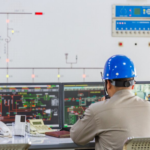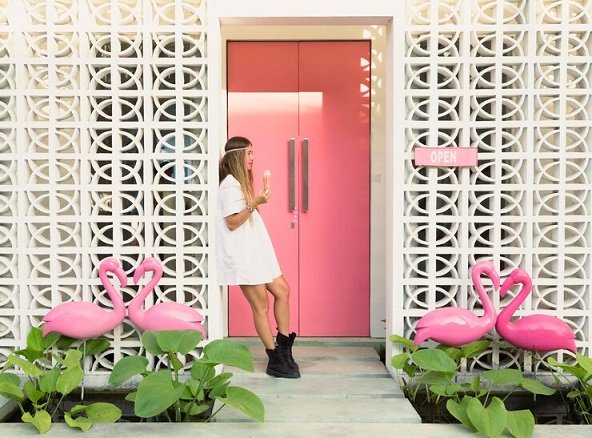The design of aluminium doors has evolved due to various factors, including advancements in extraction techniques, affordability, and the growing appreciation for aluminium’s aesthetic potential. Initially, they were used for commercial applications, but now they are gaining traction in residential settings due to their durability, versatility in design and finish, and sleek appearance.
Aluminium doors are made according to specific room needs and aesthetics, with options such as solid doors for understated elegance or aluminium doors with glass panels for a welcoming look. Aluminium doors and windows are also valued for their energy efficiency and recyclability, making them an environmentally responsible choice.
How did aluminium doors evolve?
Initially valued for their durability and strength, aluminium doors have transitioned from essential functional elements to architectural features that blend seamlessly with contemporary building designs. Let’s explore how:
● Early Days: Functionality Takes a Leap
The story of aluminium doors began in the 19th century when the extraction process became more efficient. Initially, these doors were a welcome replacement for heavier, more expensive materials like wood and iron. Their lightweight nature, durability, and corrosion resistance made them ideal for commercial and industrial applications. Early designs focused on functionality, featuring simple styles and limited customisation options.
● Mid-century Leap: Modernity Takes Hold
The mid-20th century witnessed a significant shift in architectural styles. Modernism, emphasising clean lines, open spaces, and functionality, influenced the evolution of aluminium doors. Architects began incorporating larger glass panels into door designs, maximising natural light penetration and creating a sense of openness. Aluminium’s inherent strength allowed for thinner frames, emphasising the minimalist aesthetic.
● Innovation and Versatility: Aluminium Doors Redefined
Technological advancements further propelled the development of aluminium doors. Introducing powder coating techniques opened a world of possibilities, allowing for a broader range of colours and finishes beyond traditional silver.
What are the features of modern aluminium doors?
The evolution of aluminium doors goes beyond just aesthetics. Today’s doors are designed with functionality and performance in mind.
● Weather Resistance
Modern aluminium doors are inherently resistant to wind, air, water, and noise, making them reliable for any climate or location. Modern designs often incorporate features like weather stripping and drip caps to enhance their weather resistance further.
● Security and Durability
Advanced locking mechanisms and reinforced frames enhance the security of aluminium doors. Additionally, aluminium’s natural resistance to weather ensures long-lasting performance.
● Sustainability
Aluminium is a highly recyclable material, making it an eco-friendly choice. Additionally, modern aluminium doors contribute to energy savings due to their improved thermal performance.
Which company provides the best aluminium doors?
I believe Eternia is the best provider of aluminium doors and windows in the Indian market. Their doors and windows are produced using a patented aluminium alloy called Duranium, which Eternia specially crafts to ensure uncompromised strength and durability. Think of a modern door design, and Eternia’s wide range will provide that for you—that’s how vast their range is! You can choose from casement to sliding to tilt-and-turn doors.
Their products come with a warranty of 12 years on profiles and a 3-year warranty on the moving hardware, which includes locks, knobs and handles.
Summing up
The evolution of aluminium doors has significantly impacted modern architecture by offering enhanced aesthetics, functionality, energy efficiency, and sustainability. Moreover, the emphasis on sustainability in contemporary architecture has led to using recycled and recyclable aluminium, eco-friendly coatings, and finishes for indoor construction.







